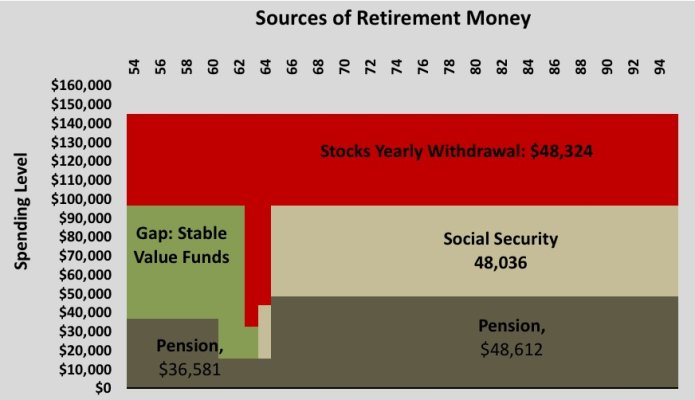Out-to-Lunch
Thinks s/he gets paid by the post
Thanks for the link. It was good re-reading that blog post.
Are you going to implement a rising equity glidepath? IIRC, you're already at a 60-65% equity allocation. If you are, I'm interested in your reasoning.
In the case of the OP, NOT replenishing buckets 1 & 2 will lead to a glide path from 55/45 to 70/30 (approx) in 7 years.
I'm not Audrey, but that is close to what I plan to do. I'm at roughly 50/50. I will set aside a chunk in bonds to provide a bridge to SS. The remaining pot will be invested at 70/30. As the bridge is spent down, the AA will glide from 50/50 to 70/30. This is effectively Kitces's Bond Tent: https://www.kitces.com/blog/managing-portfolio-size-effect-with-bond-tent-in-retirement-red-zone/
Edited to add: I cited Kitces here, but similar ideas are espoused by others. For example, in Michael Zwecher's book "Retirement Portfolios," and the actuaries who run the howmuchcaniaffordtospendinretirement.blogspot.com blog. (The specific post linked is just one of many they have on the subject, chosen nearly at random.)
Last edited:

